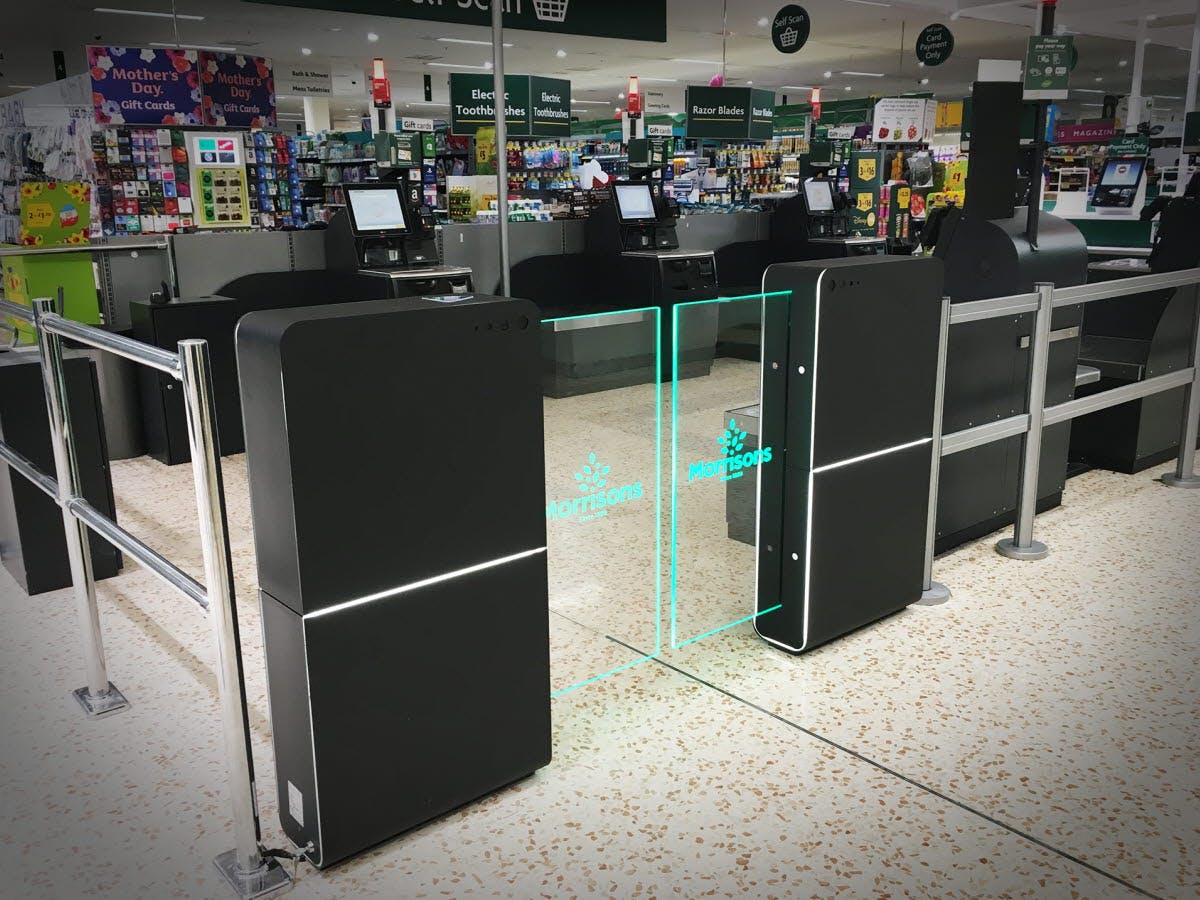
Tackling the Self-Checkout “Walkaway” Problem
In September, we asked retailers via a short questionnaire to share their current thinking on the problem of walkaways, how they defined it, how they measured and monitored the problem, the scale and nature of the problem, the current interventions in place, and their future investment plans.
To discuss these findings, we will have a working group meeting on February 4th, click here to register for that meeting. In the meantime, here are the research findings & conclusions from the eighteen retailers who responded to the survey.
How do these retailers define the problem?
Retailers describe “walkaways” as cases where customers leave the self-checkout area without completing payment, even though — to colleagues, cameras, or other customers — it looks like they have paid.
Sometimes these are accidental (customers think they’ve paid when they haven’t, made even more plausible with soft declines on contactless payments), and other times they are deliberate thefts.
Retailers view the issue as a mix of human error, poor user experience (UX), and opportunistic behaviour — a growing problem as more shoppers use self-checkout.
How they do they measure and monitor the problem?
The survey found most retailers track walkaways through multiple data sources:
- CCTV footage and POS transaction data are cross-checked to identify baskets scanned but not paid for.
- Some use AI video analytics to detect “suspicious” behaviours such as scanning then leaving early, or failing to present payment.
- Exception reporting is becoming common — flagging transactions with no payment but with items scanned.
- A few retailers measure “walkaway shrink” as a percentage of all self-checkout transactions, typically between 0.3% and 0.7% of self checkout sales value, although some reported much higher figures in certain store formats.
- Several retailers admitted they don’t yet have reliable data — meaning the true scale may be larger than currently visible [or smaller]

How big is the problem for these retailers?
Almost every retailer agreed the issue is getting worse. With self-checkout participation and the use of contactless payments growing (in some cases from 70% to 80% of transactions), even small error or loss rates now mean millions in lost sales / profit each year.
Some retailers estimated that walkaways now make up 20–30% of all losses linked to self-checkout.
What are these retailers doing about the problem now?
Current measures fall into three main areas:
- Staff training and presence – Many retailers have reinforced colleague training so attendants can spot risky behaviour, engage customers, and respond quickly. Some use “human nudge” tactics — for example, attendants saying, “Would you like a receipt?” as a subtle reminder to pay.
- User Experience (UX) design – Several have updated screen layouts, payment prompts, and sound cues to make it much clearer when a transaction is complete. Others added stronger on-screen “You haven’t paid yet” messages and louder audio tones to prevent honest walkaways.
- Physical deterrents – Many have now added exit gates, cameras above each checkout, and signage reinforcing that all purchases must be paid for. Some also use coloured lighting or digital screens to signal “payment complete.”
What are their future plans and investments?
Retailers are planning to move from manual detection to automation and analytics-driven prevention:
- AI-powered camera systems that track customer movement and payment completion.
- Smart exit gates linked directly to POS systems that only open after payment.
- Predictive analytics to identify high-risk stores, times of day, and transaction types.
- Continued investment in staff training, focusing on how to balance customer experience with loss prevention.
- Testing audio and visual UX redesigns that reduce confusion and prompt customers more clearly to pay.
In conclusion, The survey shows that “walkaways” are a growing and emerging risk, fuelled by greater SCO participation and use of contactless as a means of payment. Retailers are responding by combining better design, smarter data, and automated controls to close the gap — aiming to protect sales while keeping self-checkout convenient and trusted.
As a next step for retailers, here is a five question checklist to assess your readiness to change based on the survey results from this sample of eighteen retailers.
#1: Do we really know the size and shape of our walkaway problem?
- Are we accurately measuring incomplete or unpaid self-checkout transactions using data from POS, CCTV, and analytics tools?
- Can we break down where, when, and why walkaways happen — by store, time of day, or basket type?
#2: Is our self-checkout experience designed to make “payment complete” unmistakable?
- Are on-screen prompts, audio tones, and visual cues clear enough to prevent accidental walkaways?
- Have we tested our user interface and payment flow with real customers to spot points of confusion?
#3: Do our store teams know how to spot and stop walkaways?
- Have SCO hosts been trained to recognise high-risk behaviour and use friendly interventions (e.g., “Would you like your receipt?”)?
- Are staffing levels and visibility at self-checkout right for peak times?
#4: Are our physical and system controls fit for purpose?
- Do we use gates, cameras, or sensors connected to the POS to ensure payment before exit?
- Is there a clear escalation or alert process when a transaction fails to complete?
#5: Are we investing in automation, analytics, and culture change — not just reaction?
- Are we using real-time dashboards, AI detection, or predictive analytics to flag issues automatically?
- Do store leaders treat walkaways as a preventable process issue, not just shopper dishonesty?
If you answer “no” or “not sure” to several or all of these questions, your business may have some opportunities to strengthen its readiness — moving from manual reactions to a data-led, customer-aware, and automated prevention strategy to reduce walkaways and cut losses.
If you would like your business to become part of the self checkout working group, please click here to go to the landing page and sign up to our next meetings.
Nov 7, 2025
Main office
ECR Community a.s.b.l
Upcoming Meetings
Join Our Mailing List
Subscribe© 2023 ECR Retails Loss. All Rights Reserved|Privacy Policy
